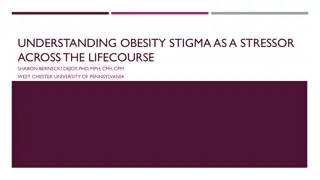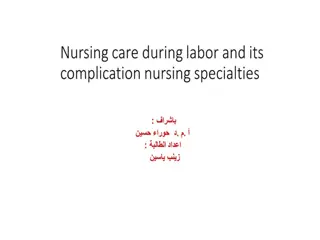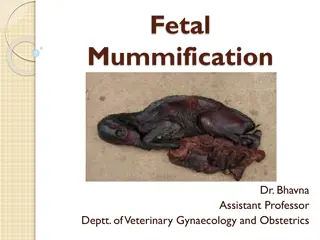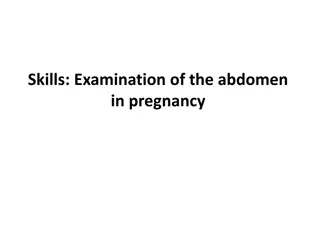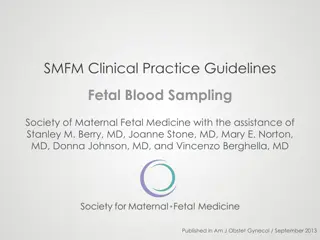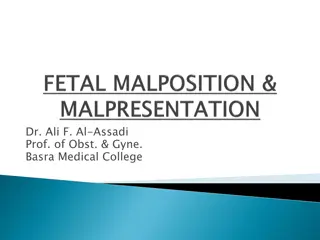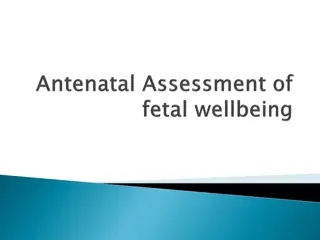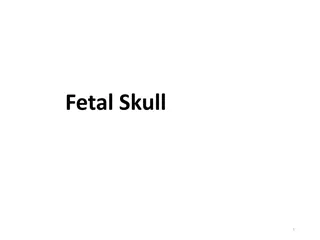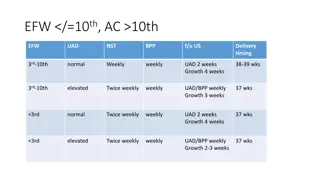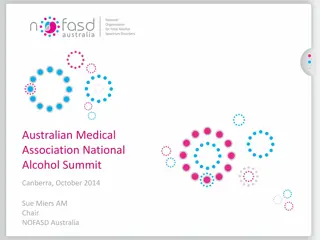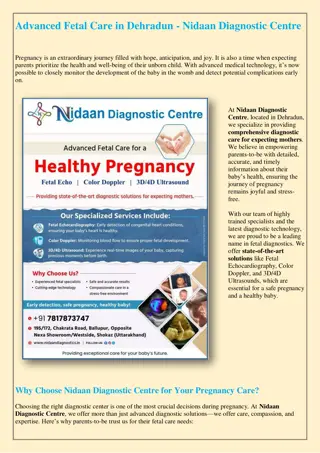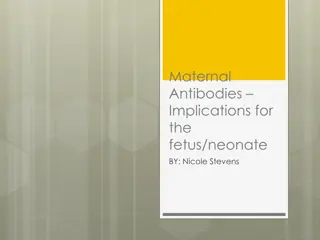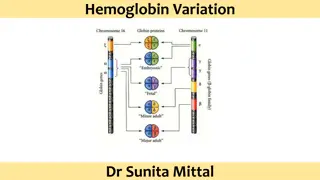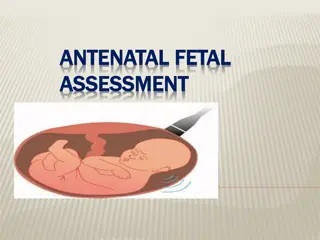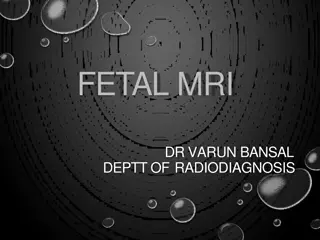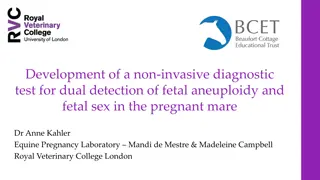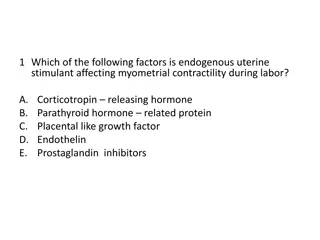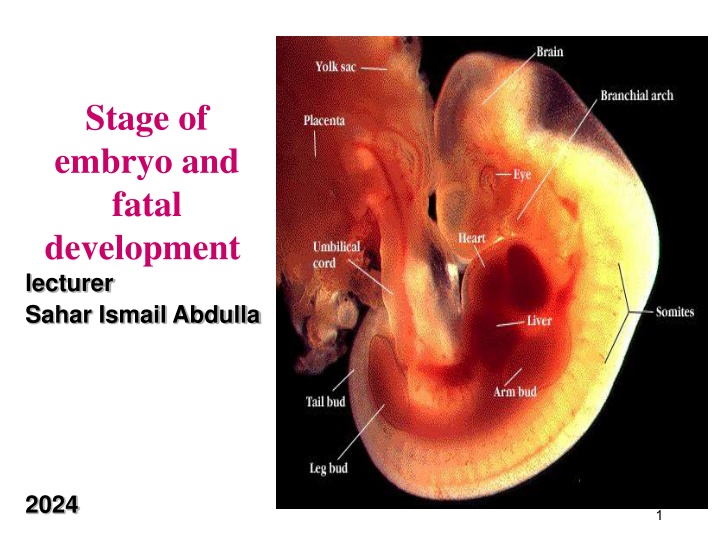
Prenatal Development and Fertilization Process Explained
Explore the stages of prenatal development, from conception to birth. Learn about the formation of twins, fertilization, and the three key prenatal stages - germinal, embryonic, and fetal. Discover the remarkable changes that occur as a baby grows from a fertilized egg to a developing fetus, shaping their future psychological development.
Download Presentation

Please find below an Image/Link to download the presentation.
The content on the website is provided AS IS for your information and personal use only. It may not be sold, licensed, or shared on other websites without obtaining consent from the author. If you encounter any issues during the download, it is possible that the publisher has removed the file from their server.
You are allowed to download the files provided on this website for personal or commercial use, subject to the condition that they are used lawfully. All files are the property of their respective owners.
The content on the website is provided AS IS for your information and personal use only. It may not be sold, licensed, or shared on other websites without obtaining consent from the author.
E N D
Presentation Transcript
Stage of embryo and fatal development lecturer Sahar Ismail Abdulla 2024 1
Prenatal Baby Development A baby goes through several stages of development, beginning as a fertilized egg. The egg develops into a blastocyst, an embryo, then a fetus. Prenatal development is a time of remarkable change that helps set the stage for future psychological development. The brain develops over the course of the prenatal period, but it will continue to go through more changes during the early years of childhood
Conception the process of becoming pregnant, when a sperm and egg join to form a single cell Cell division begins approximately 24 to 36 hours after conception. Once a month and ovum is released Ovum- A female egg The Egg moves through the Fallopian Tube to the uterus Uterus-Where the fetus develops during pregnancy
But . . . If it is fertilized in the Fallopian Tube by a sperm Conception will occurs This Union is what we call a zygote! Fertilization is the union of the ovum and spermatozoa. must occur fairly quickly after release of the ovum because it usually occurs in the outer third of a fallopian tube.
Fertilization Fertilization Fraternal Dizygotic- fertilization of two separate eggs with two different sperm during the same pregnancy. Separate placentas, amnions. May be same sex or different. Incidence increases with( maternal age, in families with genetic factors, using treatment for induction of ovulation). Identical Monozygotic- derived from a single fertilized egg with single sperm then splitting into two. Same placenta and amnion. Same sex.
Figure 33b Formation of fraternal twins (Note separate placentas.)
There are three stages of prenatal development include: Germinal stage: from 0-2 weeks The division of cells and implantation of the blastocyst. Embryonic stage: 3-8 weeks The development of the neural tube and organs. Fetal stage: 9 weeks to birth Continued growth of organs and physical development in preparation for birth.
The germinal stage; begins at conception when the sperm and egg cell unite in one of the two fallopian tubes. The fertilized egg is called a zygote. Just a few hours after conception, the single-celled zygote As the cells multiply, they will also separate into two distinctive masses: the outer cells will eventually become the placenta, while the inner cells form the embryo. The cells develop into what is known as a blastocyst.
The blastocyst is made up of three layers, each of which develops into different structures in the body. Ectoderm: Skin and nervous system Endoderm: Digestive and respiratory systems Mesoderm: Muscle and skeletal systems
Pre embryonic Development 1st 2 wks of development Cellular Multiplication Zygote moves through fallopian tube. Morula- a solid mass of blastomeres that forms when the zygote splits in the uterus, the cells continue to divide, becoming a hollow ball of cells called a blastocyst. The blastocyst implants in the wall of the uterus about 6 days after fertilization
(Blastocyst) develops into: 1. Embryo 2. Amnion: It is a membrane that closely covers the embryo when first formed. It fills with the amniotic fluid which causes the amnion to expand and become the amniotic sac which serves to provide a protective environment for the developing embryo. Trophoblast: is the outer layer of Blastocyst and develops into chorion Implantation: fertilized egg becomes implanted in the lining of the uterus and Attaches to surface of endometrium (process called, decidua) Occurs 7 9 days after fertilization
Figure 34 During ovulation, the ovum leaves the ovary and enters the fallopian tube. Fertilization generally occurs in the outer third of the fallopian tube. Subsequent changes in the fertilized ovum from conception to implantation are depicted.
The function of amniotic fluid: Fluid allows the fetus to move. Helps the lungs develop. Provides a heat buffer that keeps the fetus at a constant temperature. Aiding digestive system development, Preventing the amniotic sac from coming in contact with the fetus.
Preembryonic / Embroyonic Yolk Sac Second cavity developed at 8 9 days. Forms primitive RBC s during 1st 6 weeks. Umbilical Cord Formed from the amnion; attaches the embryo to the yolk sac. Three vessels two arteries and one vein. Wharton s jelly surrounds vessels in cord preventing cord compression. Lack of Jelly
Embryonic Stage of Development The beginning of the third week after conception. Is a time when the mass of cells becomes distinct as a human. The embryonic stage plays an important role in the development of the central nervous system including the spinal cord and brain Around the fourth week, the head begins to form, quickly followed by the eyes, nose, ears, and mouth. The blood vessel that will become the heart start to pulse. During the fifth week, buds that will form the arms and legs appear. .
In the eighth week of development, the embryo has all of the basic organs and parts except those of the sex organs. At this point, the embryo weighs just one gram a By the end of the embryonic period, the basic structures of the brain and central nervous system have been established. At 5 weeks the embryo is inch long All major organ systems develop.
The placenta and Umbilical Cord develop Placenta- The tissue that connects the sac around the unborn baby to the mother s uterus Umbilical Cord- Tube that connects the baby to the placenta Brings the baby nourishment and oxygen from the mother s blood Takes away waster products Amniotic Fluid surrounds the baby Face, and limbs take shape
Fetal Stage of Prenatal Development the embryo enters the next stage and becomes known as a fetus. This period of development begins during the ninth week and lasts until birth. This stage is marked by amazing change and growth. The early body systems and structures established in the embryonic stage continue to develop. The neural tube develops into the brain and spinal cord and neurons continue to form.
Between the ninth and twelfth week of gestation the fetus begins to make reflexive motions with its arms and legs. The genital organs can be recognized as male or female The end of the third month also marks the end of the first trimester of pregnancy
In month 4-6 During the second trimester, the heartbeat grows stronger and other body systems become further developed. Fingernails, hair, eyelashes, and toenails form. the fetus increases about six times in size. Around 28 weeks, the brain starts to mature faster, with an activity that greatly resembles that of a sleeping newborn. The fetus is 8-10 inches long and weighs 4-5 oz The baby can such thumb, swallow and hiccup. 1 oz = 0.02 kg
Your baby is covered with a layer of thick, downy hair called lanugo. His heartbeat can be heard clearly. A protective coating called vernix begins to form on baby's skin This may be when you feel your baby's first kick. During the period from seven months until birth, the fetus continues to develop, put on weight, and prepare for life outside the womb. The lungs begin to expand and contract, preparing the muscles for breathing. While development usually follows this normal pattern, there are times when problems with prenatal development occur. Disease, malnutrition, and other prenatal influences can have a powerful impact on how the brain develops during this critical period.
The FetusMonth 7 Fetus is 10-12 inches long and weighs about 1-2 pounds Fetus is active and then rests. The baby now uses the four senses of vision, hearing, taste and touch 1 pound = 0.4 kg
The FetusMonth 9 Fetus is about 17-18 inches long and weighs 5-6 pounds Skin is smooth because of the fat Baby s movement slows down due to lack of room Lightening occurs when the baby drops in the pelvis
The first 13 weeks of pregnancy ( first trimester) are considered the most critical in prenatal development. It is during this period that the embryo forms organs. It is also the period when most miscarriages occur.
Stage of pregnancy Although pregnancy involves a continuous process, it is divided into three 3-month periods called trimesters : st trimester (0 to 13 weeks) 1 nd trimester (14 to 25 weeks) 2 rd trimester (26 weeks to delivery). 3


